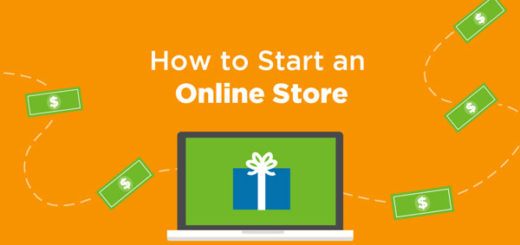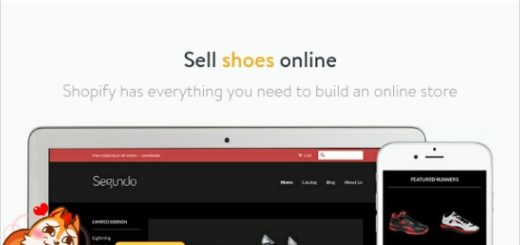How To Start A Dropshipping 101 Business: Top Easiest Way To Sell In 2021
Dropshipping is a business model that allows shop owners to sell directly to retailers without having an inventory. When a client patronizes a dropshipper, a third party agency takes care of delivery.
The customer pays a set retail price, while you (the dropshipper) pay the producer the wholesale price and then keep the rest as your profit. What makes dropshipping so great is that you can perform all of these operations without having to rent a space or stocking up on inventory.
To become a dropshipper, you need to ask a supplier for permission to collaborate. However, it doesn’t just end there. You also need to reach out to customers and advertise your services to them. For potential customers to get information on what you sell, you can pay an essay writer to help you write content that puts your dropshipping business in the eye of the public.
How Dropshipping Works
Here is a quick rundown of how the dropshipping business model works:
- A customer places an order for a certain product.
- The order is sent to the supplier.
- The supplier delivers goods on behalf of your business.
When it comes to sales, a lot of retailers often stock up on goods and end up not selling all of them. As such, they end up losing profit. This is where dropshipping comes in. With this business model, you don’t need to stock up on goods.
Dropshipping is also effective because it requires a minimal upfront investment. However, the returns are similar to traditional retailing.
Dropshipping Statistics
When it comes to dropshipping, a lot of people believe that this business is not a sustainable one and they are being careful about getting involved. This belief is one that could have easily been changed if pro essay writers talked more about the sustainability of dropshipping in their business reviews. In the absence of such essay writers’ perspective, the information around dropshipping is limited. However, the following statistics should alleviate your fears a little:
- 84% of online sellers say that having a good rapport with dropshippers is a great way for your business to grow.
- 22%-33% of online retailers have adopted dropshipping as their major business model.
- 34% of goods sold on Amazon were sold via dropshipping. That is $14.2 billion worth of goods dispersed through dropshipping.
- The average profit of a manufacturer who takes advantage of dropshipping is 18.33% more than that of the manufacturer who uses the traditional retailing model.
- On a global scale, e-commerce revenue amounted to $2.3 trillion and according to projections, it will rise to $4.48 trillion by 2021.
All You Need to Start a Dropshipping Business
Aside from the basics which include having a positive attitude, investing smartly in your new venture, and committing to growing your new venture, there are other essentials you need. Here’s a breakdown of everything you need to start a dropshipping business:
- Finding a product to sell
- Getting a supplier
- Getting a sales tax ID
- Getting a platform to sell on
Let’s take a look at these essential steps in detail, shall we?
Step 1: Finding A Product To Sell
In the dropshipping business, you first have to find a niche. It is believed that using the dropshipping model, you can make profits in any niche. However, that’s absolutely untrue. In fact, the more specific your niche is, the better.
Since dropshipping is getting popular and most of the niches are already getting filled with other dropshippers or big brands, it may seem like an impossible task to find your own place under the sun.
However, there’s no need to panic yet. With the influx of new products into the market, the possibilities remain endless.
How to Choose a Dropshipping Niche
A lot of dropshipping niches are already saturated with big brands and other dropshippers. So, to avoid frustration, take the following steps to find your own niche:
Pick something of interest
Go for products associated with something you love doing. Since you already have an idea of how the products work, you will be able to know which is more likely to succeed in that field. So go for something you are passionate about.
Solve your own problem
This is a bit of an old school entrepreneurial advice. If something is a problem for you, then it’s also a problem for other people. So, finding a niche that solves your problems is a great start.
Analyze the competition
The thing is, you might be interested in a niche that is saturated. So, how do you manage that? You find out who your competitors are and then see if it’s an easy competitor to beat or if it is even worth the risk. In any case, you don’t have to give up just because there are others in a particular niche. Just get ready for competition.
Make sure the niche is profitable
The key purpose of any business is to generate revenue. Don’t just run off with a niche without checking the demand and the profit margin. You should be making at least a 40% profit margin after paying the supplier. However, the eventual aim should be a 100% profit margin.
Step 2: Getting A Supplier
As an eCommerce entrepreneur, it’s important for you to find a supplier that will refill their stock and deliver goods to your customer on time. The most important business relationship in dropshipping is between you and your supplier.
What To Look Out For In a Supplier
1. Find a Dropshipper
Not every supplier dabbles in dropshipping. Some people are just manufacturers or wholesalers. So, before transacting in business deals with any supplier, make sure that they are actually dropshippers.
2. Experience and Helpfulness
Before doing business with any supplier, make sure they have experience in dropshipping and are helpful. If you’re negotiating with a supplier who doesn’t sound experienced enough, go away.
3. Reasonable Order Fee
It is normal for dropship suppliers to want to charge additional fees for the delivery because they are helping you keep your goods and deliver them. However, the charges should be around $2-$5. If it’s anything more, it’s advisable to search for a more affordable option.
4. Fast Shipping
A lot of dropship suppliers are located in China. As such, it’s important to check their delivery time to the country you work from. One-two weeks is acceptable but anything more than that may be harmful to your business.
5. High Quality Products And Product Pictures
You should always request samples so that you could test the quality of the product. This will help your brand as you will become known for providing quality products. Also, get high quality pictures that you can use in your business catalog.
6. Customer Reviews
A professional dropshipper should be able to provide referrals on request – that is, people they have worked with that can confirm if their business is really good. However, some online reviews can be false and some can have a pro essay writer write reviews for them. As such, it’s important to be on the lookout for whose reviews are real and whose are bogus.
How To Find Reliable Suppliers
There are two ways you can use to find dropship suppliers:
- Searching manually on the internet: just type your product and supplier in Google and see what pops up.
- Using a wholesale directory: this approach reduces e-commerce fraud. There are e-commerce sites that provide suppliers like Alibaba or AliExpress.
Step 3: Get a Sales Tax ID
Sales Tax is a tax levied on all products sold to consumers. It is usually between 6% to 9% of the sales price and some states require it.
If you plan on starting your business in Canada or the United States, you most likely need a sales tax ID which is also known as retail or reseller’s ID, vendor’s license, tax ID, resale number or resale certificate. Although in some states like Montana, Alaska, Delaware, Oregon and New Hampshire, you can dropship without a sales tax ID.
The tax should be wisely added to the retail price, while applying for a tax ID is a rather simple procedure. You can get it at your sales county or online by searching for it on Google. Although, sometimes before you can get a sales tax ID, you must be a business entity, a company, or sole proprietor (which is good for businesses from home). To do this, you need a Federal Tax ID number.
Some suppliers won’t work with you if you don’t have a sales tax ID.
Step 4: Get a Platform To Sell On
After finding your niche and supplier, you should figure out where you are going to sell. Now, there are 2 options: using an established platform or building your own website.
There are pros and cons to both of these options. So, let us review them, shall we?
Pros and Cons of Using An Established Platform
Pros
- Easy to register and begin selling.
- Already has a large amount of traffic.
- Tested and trusted by consumers.
- You can make good money through it.
Cons
- There are charges attached to every sale you make.
- Your control over branding and customer service is very limited.
- The competition is high.
- Consumers have a lot of choices.
Pros and Cons of Building Your Own Website
Pros
- You have complete control over your branding and customer service and every other thing about your business.
- You get to build your business which is not dependent on any third-party platform.
- There are no fees attached.
- No competition.
Cons
- It is going to cost you money to get a developer and maintain the site.
- It will take time to get as much traffic as you need and rank high on Google.
If you would be dabbling in dropshipping as a long term business, starting your own site is a good investment because established platforms get saturated daily.
So, here are some tips to drive traffic to your site:
- Run Facebook ads.
- Publish sponsored Instagram posts.
- Run Google ads.
- Promote influencer advertising (this is when an influencer endorses your brand. People trust influencers, so this is a great option to opt for).
Conclusion
Dropshipping is going to take a massive positive turn in 2021. It is a great business idea and you can still keep your regular job while doing this business. It is also a stellar freelancing option since it will pay off as long as you invest your time and money wisely.
Source: ShopMaster








